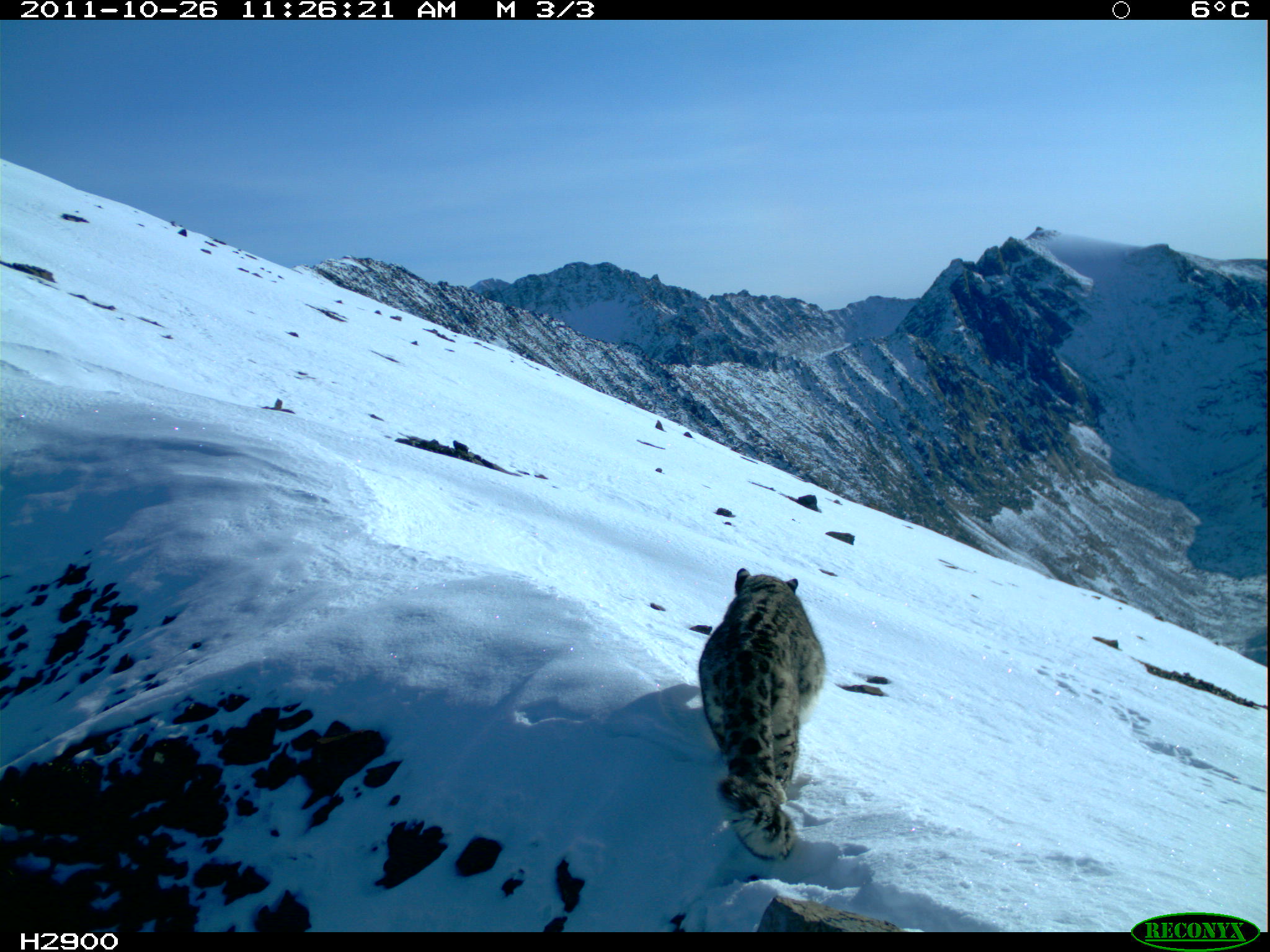
First Images Taken of Snow Leopards in Siberia

Motion-sensor-equipped cameras have taken the first images of the elusive and threatened snow leopard in a remote mountain range in Siberia.
The photos were taken between Oct. 26 and 30 at an altitude of about 13,100 feet (4,000 meters) on the Chikhachyova Ridge in the Altai Republic, a semiautonomous region in southern Russia.
"To get a picture is really a big deal," said James Gibbs, a conservation biologist who had found signs of the snow leopard there this past summer. "The signs that the species is in this region are definitive but a picture is irrefutable."
Gibbs, who is with the SUNY College of Environmental Science and Forestry in Syracuse, N.Y., said the animals are probably part of a larger population that extends into Mongolia.
Ten cameras had been installed in the area after Gibbs and some colleagues found evidence of the leopard's presence during an expedition. The researchers had made the trip primarily to survey the population of Argali sheep, the world’s largest wild sheep species, which is threatened by hunters and habitat loss. But at the same time, the researchers searched for evidence of snow leopards.
"Snow leopards leave clear signs that you see readily if you look for them," Gibbs said in a statement. "You can find scat and places where they scratch trees with their claws. And you see their scrapes, circular depressions made in the gravel that are slightly discolored. They maintain these scent marks. If you see fresh ones, you know snow leopards are in the area."
The snow leopard population is threatened by poachers, who hunt the animals for their distinctive spotted coats.
Sign up for the Live Science daily newsletter now
Get the world’s most fascinating discoveries delivered straight to your inbox.
In addition to the snow leopards, the cameras caught images of a rarely seen Pallas cat, also called a manul, a thick-furred feline about the size of a domestic cat.
The expedition that installed the cameras was sponsored jointly by the nonprofit conservation group Arkhar NGO and the Altaisky State Biosphere Reserve. The conservation group Panthera provided a grant to purchase the cameras.










